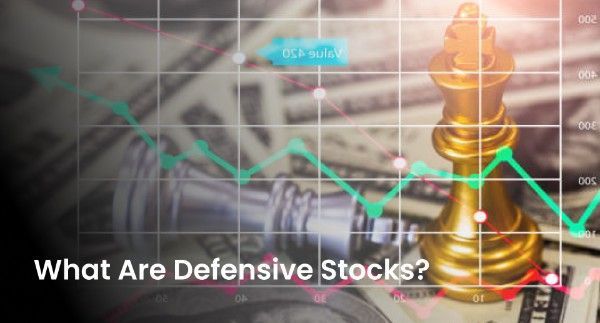What is a Portfolio?

The term ‘portfolio’ is widely used in the world of finance and investment. Financial experts often suggest investors create a robust portfolio to ensure long-term wealth creation. But then, what is a portfolio, and what are the different types of portfolios? In this guide, we will be demystifying the concept to truly understand what the term represents and explore the various components of a portfolio.
Portfolio Definition
The term portfolio is used to refer to a collection of investments curated by an investor. It usually includes a diverse set of assets, including both market-linked and non-market-linked traditional investments. Developing a diversified portfolio of assets is crucial, especially if you are looking to create wealth over the long run.
What is a Portfolio and What are its Objectives?
A portfolio is simply a collection of investments held by an investor. It represents a strategic group of various investments, each of which is carefully selected to achieve specific financial objectives while simultaneously managing risk.
The primary purpose of a portfolio is to spread risk across different asset classes and investment vehicles. By investing in multiple related and unrelated assets across different categories, investors can effectively maximize their returns while managing potential losses.
The construction of investment portfolios is based on the concept of diversification, which is a principle rooted in the fact that not all assets move in the same direction at the same time, and investing in different asset classes could potentially reduce overall portfolio volatility.
A well-constructed portfolio must ideally reflect the investor's financial goals, risk tolerance, investment horizon, and liquidity needs.
What are the Components of a Portfolio?
Now that you are aware of the definition of a portfolio and its objectives, let us look at its various components.
Equity
Equity represents ownership in companies. Among the most common types of equity investment options are stocks. Stocks offer the potential for capital appreciation and passive income in the form of dividends.
Debt
Debt represents fixed-income investments that provide regular interest payments and return of principal at maturity. Some of the most common debt investment options include government bonds, corporate bonds, and debentures.
Mutual Funds
Mutual funds are special investment vehicles that invest funds pooled from many investors into a diversified basket of assets. Mutual funds are categorized based on the asset they invest in, the method of management, and the investment strategy, among others.
Gold
Many financial experts suggest including gold in investment portfolios due to their ability to act as a hedge against inflation. Gold investments include direct purchases of the precious metal in the form of bars, coins, or even jewelry, and indirect investments in the form of digital gold, gold ETFs, and Sovereign Gold Bonds (SGBs).
Real Estate
Real estate investments include direct investments in property, such as land or buildings, and indirect investments through Real Estate Investment Trusts (REITs). Both direct and indirect real estate investments have the potential to offer income and capital appreciation.
Cash and Cash Equivalents
Cash and cash equivalents include highly liquid assets such as savings accounts, bank deposits, money market funds, and short-term government securities. These investments provide stability and liquidity to investment portfolios.
Types of Portfolio
Investment portfolios can be categorized into different types based on their objectives and risk profiles. Here is a quick overview of some of the common types of portfolios.
Growth Portfolio
One of the most common types of portfolios, growth portfolios primarily focus on maximizing capital appreciation. These portfolios typically have a greater allocation to stocks, especially growth-oriented stocks.
Income Portfolio
Income portfolios aim to generate regular income in the form of dividend payments and interest. Such portfolios often consist of high-dividend stocks, bonds, and real estate investment trusts (REITs).
Value Portfolio
Value portfolios are also among the most preferred types of portfolios. They target stocks that are valued lower than their intrinsic value (undervalued), with potential for price appreciation in the future.
Balanced Portfolio
As the name implies, balanced portfolios tend to strike a middle ground between growth and income. These portfolios have a mix of stocks, bonds, gold, real estate, and cash equivalents.
Factors that Affect Portfolio Allocation
Portfolio allocation involves distributing investments across various asset classes to achieve the ideal balance of risk and return. Several key factors influence how a portfolio is affected. Let us look at a few of them.
Investment Goals
One of the most important factors that affect portfolio allocation is the nature of investment goals. For example, short-term goals may require more conservative allocations, whereas long-term objectives might allow for more aggressive strategies.
Risk Tolerance
An investor's ability and willingness to endure market volatility is also a major influence on portfolio allocation strategies. A conservative investor might invest more of their capital in debt than equity, whereas an aggressive investor might allocate a larger portion of their investment capital towards equity.
Time Horizon
The investment horizon impacts asset allocation directly and indirectly. If the time horizon is very short, investors can consider allocating more towards cash and cash equivalents. Meanwhile, if the time horizon is long, they can consider investing in equity.
Personal Circumstances
Personal circumstances such as age, income, and financial responsibilities also play a major role in determining the appropriate portfolio allocation.
Conclusion
Portfolios offer a structured approach to creating wealth and achieving financial goals. Whether you are aiming for growth, income, or a balance of both, well-constructed investment portfolios can help you better navigate the complexities of the financial markets.
If you are looking for a platform to assist you in your wealth creation journey, Motilal Oswal's Research 360 can help. The platform features comprehensive tools for stock analysis and market research. You can get real-time market updates, detailed analytics, financial result analysis, expert stock recommendations, and more. By leveraging Research 360, you can enhance your decision-making process and optimise your portfolio’s performance.

















